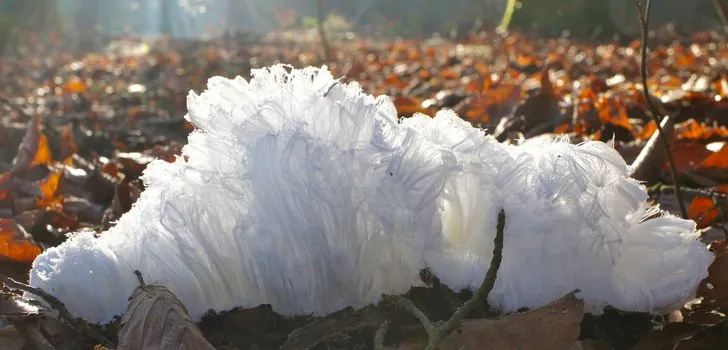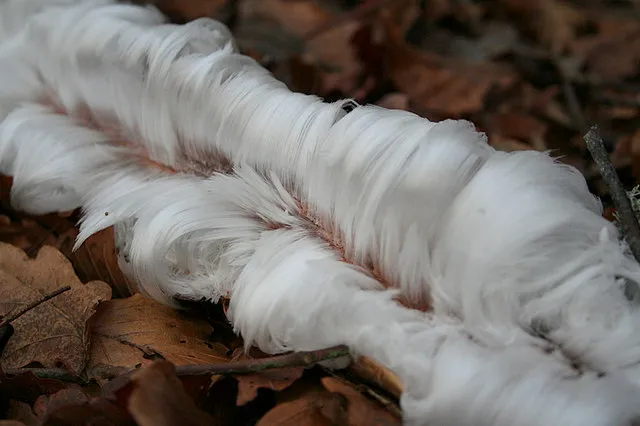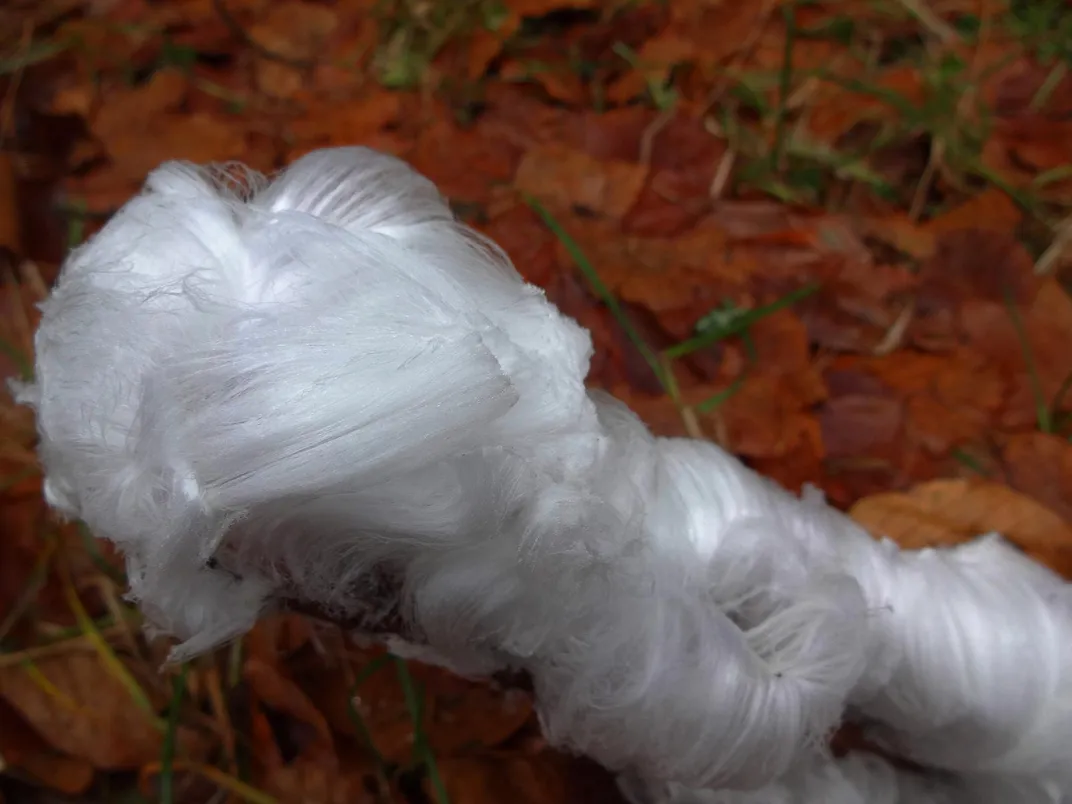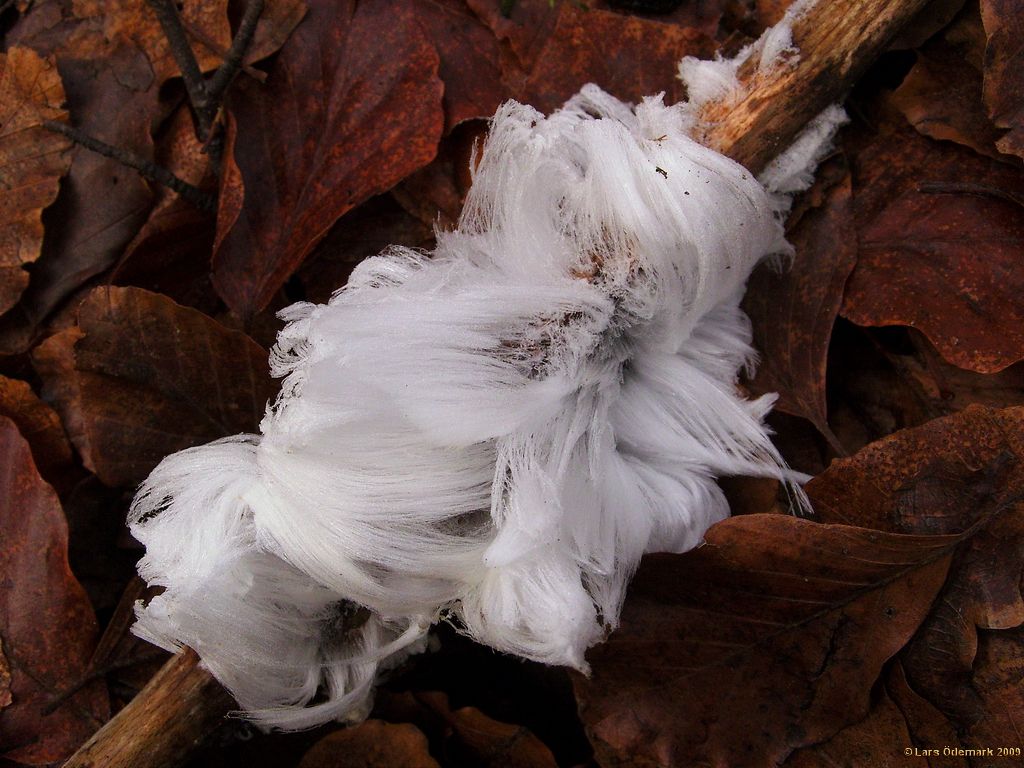Here’s How a Strange Phenomenon Called ‘Hair Ice’ Forms on Dead Trees
The white ice filaments look a lot like cotton candy
Fungus is responsible for some weird things: Some species are deadly for snakes and bats, others might help humans rid themselves of bed bugs, Cordyceps species can control insects for their own nefarious purposes, and most are bizarre-looking. Add another unusual thing to this list: Fungus shapes a strangely wondrous kind of ice called hair ice that is found only on rotting logs, according to the European Geosciences Union.
To see hair ice, one’s best chance is to hike into a broadleaf forest between the latitudes of between 45° and 55° N on a cold morning. There, amid patches of snow and frost, a keen eye might spot delicate crystals extending from wood in filaments about 0.01 millimeters thick — about the diameter of a human hair. But as soon as the sun rises, the fragile sculpture will melt away.
Hair ice first officially entranced researchers more than 100 years ago. Alfred Wegener, who first proposed the theory of plate tectonics, tried to solve the more delicate mystery of how hair ice forms too. He noticed that the ice filaments only grew on logs that also bore the thin threads of fungus mycelium and thought the two might be related.
Much more recently, physicist Christian Mätzler from the Institute of Applied Physics at the University of Bern in Switzerland and his colleagues, also grew determined to find the cause of hair ice. After sampling logs for fungus they determined that one kind consistently showed up on wood that produced hair ice, a species called Exidiopsis effusa. Experiments in the lab revealed how this fungus cultivated the icy filaments. A press release explains:
[The] driving mechanism responsible for producing ice filaments at the wood surface is ice segregation. Liquid water near the branch surface freezes in contact with the cold air, creating an ice front and ‘sandwiching’ a thin water film between this ice and the wood pores. Suction resulting from repelling intermolecular forces acting at this ‘wood–water–ice sandwich’ then gets the water inside the wood pores to move towards the ice front, where it freezes and adds to the existing ice.
Analysis of the ice itself showed that several molecules including tannin and lignin end up in the ice. The team suspects that at least one of those organic molecules keep the ice crystals from growing too large, explains chemist, Diana Hofmann of the Institute of Bio and Geosciences in Jülich, Germany. The team published their findings in the journal Biogeosciences.
Thankfully, solving the mystery, even if only partly (the researchers still aren’t sure exactly which organic molecule controls the ice crystal growth) doesn’t make the frosty growths any less entrancing.





